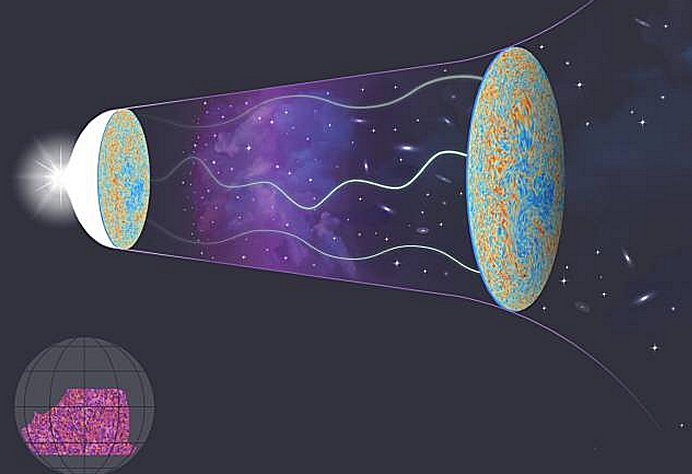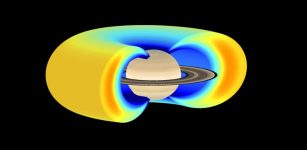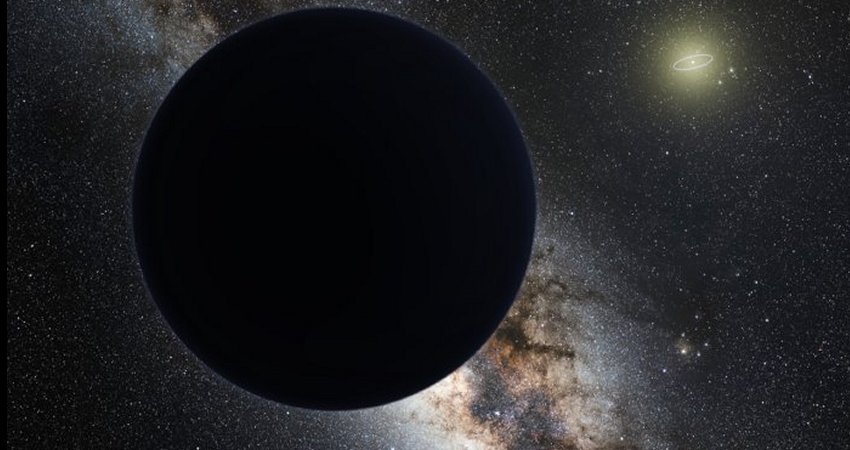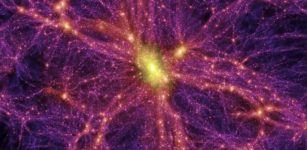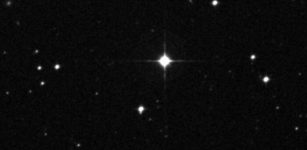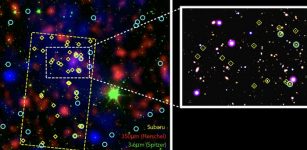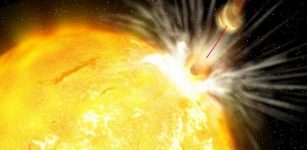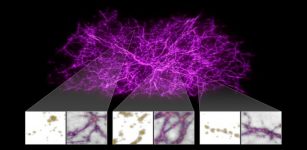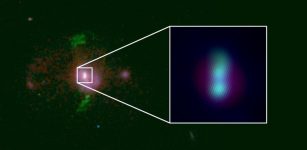New Map Of Dark Matter That Supports Einstein’s Theory Of Gravity
Eddie Gonzales Jr. – MessageToEagle.com – Now, researchers from the Atacama Cosmology Telescope (ACT) collaboration have created a groundbreaking new image that reveals the most detailed map of dark matter distributed across a quarter of the entire sky, extending deep into the cosmos.
Moreover, it confirms Einstein’s theory of how massive structures grow and bend light, over the entire 14-billion-year life span of the universe.
A view of Stephan’s Quintet, a visual grouping of five galaxies from the James Webb Telescope. Image courtesy of NASA, ESA, CSA, STScI
“We have mapped the invisible dark matter across the sky to the largest distances, and clearly see features of this invisible world that are hundreds of millions of light-years across, says Blake Sherwin, professor of cosmology at the University of Cambridge, where he leads a group of ACT researchers. “It looks just as our theories predict.”
Despite making up 85% of the universe and influencing its evolution, dark matter has been hard to detect because it doesn’t interact with light or other forms of electromagnetic radiation. As far as we know dark matter only interacts with gravity.
To track it down, the more than 160 collaborators who have built and gathered data from the National Science Foundation’s Atacama Cosmology Telescope in the high Chilean Andes observe light emanating following the dawn of the universe’s formation, the Big Bang — when the universe was only 380,000 years old. Cosmologists often refer to this diffuse light that fills our entire universe as the “baby picture of the universe,” but formally, it is known as the cosmic microwave background radiation (CMB).
The team tracks how the gravitational pull of large, heavy structures including dark matter warps the CMB on its 14-billion-year journey to us, like how a magnifying glass bends light as it passes through its lens.
“We’ve made a new mass map using distortions of light left over from the Big Bang,” says Mathew Madhavacheril, assistant professor in the Department of Physics and Astronomy at the University of Pennsylvania, in a press release.
“Remarkably, it provides measurements that show that both the ‘lumpiness’ of the universe, and the rate at which it is growing after 14 billion years of evolution, are just what you’d expect from our standard model of cosmology based on Einstein’s theory of gravity.”
The cosmic microwave background (CMB) radiation, ancient light emitted when the universe was in its infancy, has travelled billions of years, witnessing the formation of stars, galaxies and galaxy clusters. The gravitational fields of these massive objects have influenced the path of CMB light. At the left is the Big Bang; the wavy lines illustrate the distortion caused by the dark matter and regular matter of galaxies; at the right is an image of the warped light received by the Atacama Cosmological Telescope (ACT). At the lower left is the new map of the dark matter made by the ACT team, a visualization of all the matter in the path of the CMB light. The orange regions show where there is more mass; purple where there is less. Image: Lucy Reading-Ikkanda / Simons Foundation and the ACT Collaboration
Sherwin adds, “our results also provide new insights into an ongoing debate some have called ‘The Crisis in Cosmology,'”explaining that this crisis stems from recent measurements that use a different background light, one emitted from stars in galaxies rather than the CMB. These have produced results that suggest the dark matter was not lumpy enough under the standard model of cosmology and led to concerns that the model may be broken. However, the team’s latest results from ACT were able to precisely assess that the vast lumps seen in this image are the exact right size.
“When I first saw them, our measurements were in such good agreement with the underlying theory that it took me a moment to process the results,” says Cambridge Ph.D. student Frank Qu, part of the research team. “It will be interesting to see how this possible discrepancy between different measurements will be resolved.”
“The CMB lensing data rivals more conventional surveys of the visible light from galaxies in their ability to trace the sum of what is out there,” says Suzanne Staggs, director of ACT and Henry DeWolf Smyth Professor of Physics at Princeton University. “Together, the CMB lensing and the best optical surveys are clarifying the evolution of all the mass in the universe.”
“When we proposed this experiment in 2003, we had no idea the full extent of information that could be extracted from our telescope,” says Mark Devlin, the Reese Flower Professor of Astronomy at the University of Pennsylvania and the deputy director of ACT. “We owe this to the cleverness of the theorists, the many people who built new instruments to make our telescope more sensitive, and the new analysis techniques our team came up with.”
Written by Eddie Gonzales Jr. – MessageToEagle.com Staff


